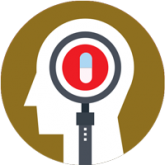Article

More on treating chronic insomnia
- Author:
- Leslie Citrome, MD, MPH
In “Treating chronic insomnia: An alternating medication strategy” (Current Psychiatry, October 2023, p. 25-31, doi:10.12788/cp.0397), Dr. Kaplan...
Article

Dexmedetomidine sublingual film for agitation
- Author:
- Leslie Citrome, MD, MPH
Approved by the FDA on April 5, 2022, dexmedetomidine sublingual film (Igalmi, manufactured and distributed by BioXcel Therapeutics, Inc., New...
Article

Evidence-based medicine: It’s not a cookbook!
- Author:
- Leslie Citrome, MD, MPH
- Dmitry Arbuck, MD
It’s not just about the evidence, it’s about how we use it in clinical practice.
Article

Asenapine transdermal system for schizophrenia
- Author:
- Leslie Citrome, MD, MPH
Approved by the FDA on October 11, 2019, asenapine transdermal system (Secuado, manufactured by Hisamitsu Pharmaceutical Co., Inc. and distributed...
Article

Aripiprazole, brexpiprazole, and cariprazine: Not all the same
- Author:
- Leslie Citrome, MD, MPH
Understanding the key differences among these agents can help inform treatment decisions.
Audio

Aripiprazole, brexpiprazole, and cariprazine
- Author:
- Leslie Citrome, MD, MPH
Leslie Citrome, MD, MPH, discusses the differences among 3 dopamine receptor partial agonists.
News

Brexpiprazole for schizophrenia and as adjunct for major depressive disorder
- Author:
- Leslie Citrome, MD, MPH
Brexpiprazole, FDA-approved in July 2015 to treat schizophrenia and as an adjunct for major depressive disorder (MDD), has shown efficacy in 2...
News
Inhaled loxapine for agitation
- Author:
- Leslie Citrome, MD, MPH
Reformulation allows for direct administration to the lungs, resulting in rapid absorption into systemic circulation
Audio
How to best help patients with residual schizophrenia symptoms
- Author:
- Leslie Citrome, MD, MPH
Leslie Citrome, MD, MPH
News
Treatment-resistant schizophrenia: What can we do about it?
- Author:
- Leslie Citrome, MD, MPH
Use pharmacotherapy and other interventions to target the symptoms that matter most to your patient
Audio
When clozapine may be right for your patient, and how to initiate therapy
- Author:
- Leslie Citrome, MD, MPH
Leslie Citrome, MD, MPH
News
Clozapine for schizophrenia: Life-threatening or life-saving treatment?
- Author:
- Leslie Citrome, MD, MPH
Clozapine, despite its side effect burden, may be the most effective and have the lowest mortality risk among all available antipsychotics
News
Can you interpret confidence intervals? It’s not that difficult
- Author:
- Leslie Citrome, MD, MPH
NNT—medicine’s ‘secret stat’—offers infinite possibilities for clinical practice.
News
Dissecting clinical trials with ‘number needed to treat’
- Author:
- Leslie Citrome, MD, MPH
Calculation suggests a study’s value to your patients.
News
Antipsychotics for patients without psychosis?
- Author:
- Fabien Trémeau, MD
- Leslie Citrome, MD, MPH
What clinical trials support
